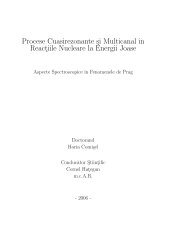Structure and detection of Kelvin-Helmholtz vortices in the ... - GPSM
Structure and detection of Kelvin-Helmholtz vortices in the ... - GPSM
Structure and detection of Kelvin-Helmholtz vortices in the ... - GPSM
You also want an ePaper? Increase the reach of your titles
YUMPU automatically turns print PDFs into web optimized ePapers that Google loves.
Introduction<br />
Observations show:<br />
The magnetopause boundary layer gets THICK at low latitudes,<br />
<strong>and</strong> <strong>the</strong> plasma sheet becomes COLD <strong>and</strong> DENSE, dur<strong>in</strong>g<br />
Northward <strong>in</strong>terplanetary magnetic field (IMF) periods.<br />
(e.g., Mitchell et al., 1987; Terasawa et al., 1997)<br />
These facts suggest significant transport <strong>of</strong> solar w<strong>in</strong>d<br />
plasmas <strong>in</strong>to <strong>the</strong> magnetosphere under northward IMF<br />
conditions.<br />
What is <strong>the</strong> transport mechanism<br />
□ Magnetic reconnection (e.g., Song & Russell, 1992)<br />
□ Transport through <strong>Kelv<strong>in</strong></strong>-<strong>Helmholtz</strong> <strong>in</strong>stability (KHI)<br />
(e.g., Fujimoto & Terasawa, 1994)<br />
□ Diffusion via wave-particle <strong>in</strong>teractions, such as via K<strong>in</strong>etic<br />
Alfven waves (e.g., Johnson & Cheng, 1997)



